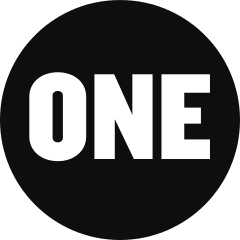
What great copywriters know that poor ones don’t: this is how many jobs your copy must do!
Today, I want to riff on a topic I first heard from my brief-but-oh-so-important mentor, Mark Ford (aka. Michael Masterson).
When I was doing a bunch of work with AWAI, I got Mark’s input on a couple projects, which really helped me understand some core elements of his thinking.
Also, I heard him speak at more than one AWAI Bootcamp, about his experience around what makes for great copy.
Now, Mark’s a singular force in direct marketing. He has a background as a copywriter and business builder.
He’s had his hand in building over two dozen successful companies — including two that have generated over $100 million per year in annual revenue.
And through AWAI, Early To Rise, his books, and his other work, no doubt there are thousands of companies that can directly attribute their growth to him. If not tens of thousands.
And around 2009, when I was really getting involved with AWAI, Mark was teaching a very important concept called “The Power of One.”
And around 2009, I really needed to learn this lesson!
I’d been working in marketing since 2005, though not at a direct response company, and not writing long copy like I do today.
(The owner of the company I worked at then thought copy that required you to scroll down on a webpage was long — he would flip out if he were to see some of what I’ve written since quitting that job, and how profitable it was!)
When I tried to write my first promotion for AWAI, it was a nonstarter.
You see, I did what many novice (and some more experienced) writers do. I tried to include ALL my good ideas. And I tried to include them as early as possible.
Which ended up giving my promo a frenetic pace. I guess you could say I gave my copy ADHD.
The net effect of writing like this is that it doesn’t captivate. It doesn’t persuade.
It may hook a reader, but they’re never quite sure what they’re supposed to know or think or do as a result.
Then, I attended my first AWAI Bootcamp.
And Mark talked about how it was much better to focus on one idea with your copy, than to get all your good ones down.
Rather than packing your copy to the gills with all your good ideas, find the most powerful. And then focus on telling, retelling, and supporting that ONE idea until your conclusion was unable to be denied.
(He actually approaches this from a few different dimensions. All around this one super-structure for your promo, you actually have a handful of substructures. These include your one main idea. Your one core emotion that you want to elicit. The one captivating story that makes a compelling hook. The one single, desirable benefit from reading and taking action. And the one inevitable response your reader must act on after reading.)
It was at this moment that my copywriting career really took off.
I became much more successful, on my very next project.
I made it a priority to always only write about one thing. And the better I did following this rule, the better my copy did in terms of responses generated. The worse I did at following this rule, the worse my copy did.
I still see this when I review copy today. The writer will start by talking about one thing, then they’ll loop around to another, and eventually to another… And by the time you’re deep into the second or third idea as a reader, you’ve lost track of why you’re reading in the first place. As a reviewer, I force myself to stick with the copy to improve it. As a prospect, I would abandon quickly.
If you want your copy to generate more sales, it’s quite possible you need to write about less. Less ideas, specifically.
Pick the one strongest story or narrative or concept or idea to build your entire promotion around.
Start with a compelling story linked to that idea, to bring the reader in.
Focus on the big benefit to the reader as a result of reading, and responding.
Present it in a way that elicits that one core emotion that’s going to drive response.
And then bring it all to its inevitable conclusion, which includes a call-to-action for the reader to take the one response that is the only logical course of action after reading.
Which, for you, after reading this article, is to start doing this on your next piece of writing.
Yours for bigger breakthroughs,
Roy Furr
Editor, Breakthrough Marketing Secrets
P.S. — Mark has written and spoken many times about this topic, but his 2010 article The Power of One — One Big Idea, published by AWAI, is worth reading (or rereading).



